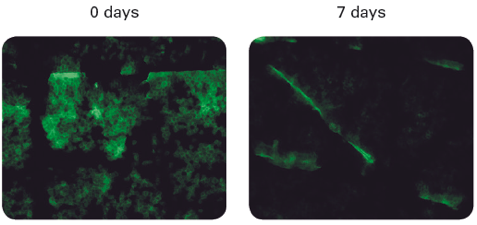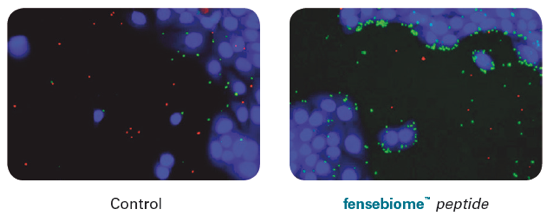Reconnecting with our origins for healthier skin
 Modern life brings us many facilities such as running water, electricity, motorization, modern medicine, and many opportunities both in the personal and professional life. But it has also negative effects like pollution, stress, lack of sleep, poor contact with nature, etc. Since the Industrial Revolution in the 18th century, the relationship of humans with their environment has changed dramatically with a large part of the population moving to the cities, away from their ancestral constant interaction with nature. This fact triggered a growing prevalence of inflammatory skin disorders such as allergies and eczema, which led us to deduce that the reduced exposure to nature contributes to increasing the risk of inflammatory skin conditions.1
Modern life brings us many facilities such as running water, electricity, motorization, modern medicine, and many opportunities both in the personal and professional life. But it has also negative effects like pollution, stress, lack of sleep, poor contact with nature, etc. Since the Industrial Revolution in the 18th century, the relationship of humans with their environment has changed dramatically with a large part of the population moving to the cities, away from their ancestral constant interaction with nature. This fact triggered a growing prevalence of inflammatory skin disorders such as allergies and eczema, which led us to deduce that the reduced exposure to nature contributes to increasing the risk of inflammatory skin conditions.1
In order to understand the skin characteristics of our ancestors before modernization, a study was performed on an isolated hunter-gatherer village in the Amazon jungle, whose members did not have any previous contact with urban or modern lifestyles.2 The research compared their skin microbial genome to that of individuals living in the United States with a lower connection with nature and higher antimicrobial practices. Results suggested that the exposure to modern lifestyles may induce alterations in the cutaneous microbiota, such as a reduction in bacterial diversity, that could make the skin more prone to sensitivity and discomfort.
The cutaneous microbiota can provide vital functions to the skin, such as host protection against pathogens, barrier function improvement, modulation of the skin immune system and skin nutrition. The microbiota-skin communication helps obtain a microbial balance that is linked to a more protected healthy skin.
Recently developed by Lipotec, FENSEBIOME™ peptide is an heptapeptide that assists in strengthening the skin of people exposed to an urban environment by promoting microbiota balance and diversity as well as an increase in beneficial bacteria. These are all characteristics of a healthier skin that remains in contact with nature. The new ingredient also helps reinforce the double cutaneous barrier function and prevent dehydration, one of the main problems of sensitive skin. The efficacy of the active ingredient was evaluated through several in vitro and in vivo tests.
A metagenomics analysis assessed the ability of the peptide to modulate the skin microbiome of urban female volunteers that applied a cream containing 1% peptide solution on the cubital fossa of one arm and a placebo cream on the other, twice a day for seven days. Researchers observed an increase in the bacterial diversity on the treated skin, as well as a better balance of the microbiota. FENSEBIOME™ peptide also helped reduce the transepidermal water loss (TEWL) levels, when applied before inducing irritation and evaluated 48 hours after damage, with a decrease of 27.8 percent.
After surfactant-induced damage, the transepidermal water loss was evaluated by applying the peptide solution on the shin, and observing a protective effect on the physical barrier to prevent dehydration. The corneocyte cohesion was also assessed and a reduction in skin scaliness with 18.6 percent less sloughed corneocytes was observed, suggesting the ability of the peptide to restore sensitive skin to its original condition.

FENSEBIOME™ peptide assisted in boosting the skin’s own defense system by favoring the presence of beneficial bacteria and by improving the skin’s immune response and the physical barrier integrity, as shown in vitro.

FENSEBIOME™ peptide represents a way to reconnect with our origins, since it helps increase cutaneous bacterial diversity and favors the beneficial bacteria on the skin, which is a marker of the healthy and protected skin of populations living in closer contact with nature.
FENSEBIOME™ peptide can be incorporated into formulations aiming to strengthen the double cutaneous barrier function and to prevent dehydration, as well as in prebiotic- and probiotic-inspired skin care products intended to reinforce urban and sensitive skin.
Paid content provided by Lubrizol.
FENSEBIOME™ is owned by The Lubrizol Corporation or its affiliates. © 2018 The Lubrizol Corporation. All Rights Reserved.
References:
- Haahtela T. The biodiversity hypothesis and allergic disease: World allergy organization position statement. World Allergy Organization Journal. 6(3): 1-18, 2013.
- Clemente J, et al. The microbiome of uncontacted Amerindians. Sci. Adv. 1:e1500183, 2015.
The views, opinions and technical analyses presented here are those of the author or advertiser, and are not necessarily those of ULProspector.com or UL Solutions. The appearance of this content in the UL Prospector Knowledge Center does not constitute an endorsement by UL Solutions or its affiliates.
All content is subject to copyright and may not be reproduced without prior authorization from UL Solutions or the content author.
The content has been made available for informational and educational purposes only. While the editors of this site may verify the accuracy of its content from time to time, we assume no responsibility for errors made by the author, editorial staff or any other contributor.
UL Solutions does not make any representations or warranties with respect to the accuracy, applicability, fitness or completeness of the content. UL Solutions does not warrant the performance, effectiveness or applicability of sites listed or linked to in any content.



FENSEBIOME™ peptide, send us TDS
Hi Deepak,
You can find the SDS on the FENSEBIOME product page in Prospector: https://www.ulprospector.com/en/na/PersonalCare/Detail/2670/984188/FENSEBIOME-peptide-solution?st=31
Thanks!
Angie
Content Manager, Prospector Knowledge Center